In this educational lesson, we learn about the purpose of gel electrophoresis and how gel electrophoresis works.
The Purpose of Gel Electrophoresis
Gel electrophoresis in a method of separating DNA. It can be used to separate the size of DNA, RNA, and protein.
•A method for separating DNA
•Can be used to separate the size of
–DNA
–RNA
–Protein
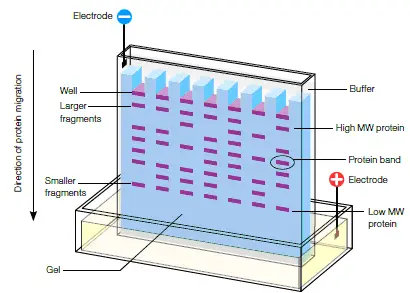
DNA in Gel Electrophoresis and How It Separates
You first start with a variety of different fragments of DNA all mixed together.
The gel is a porous matrix like a sponge and separates the DNA based on two main things: 1) size and 2) charge.
Gel Electrophoresis: Separation By Size
As DNA is moved through the gel, smaller sized fragments move through faster than larger sized fragments.
For example, a 100 base pair fragment will move through the gel faster than a 500 bp fragment.

Gel Electrophoresis: Separation Using Charge
The charge on DNA is what makes it move through the gel. DNA is a negatively charged molecule, so it will move towards a positive charge.
What makes DNA a negatively charged? Phosphate group is negatively charged.
The gel is hooked up to a power source. DNA is loaded onto the gel on the cathode (-) end.
Gel is placed in a buffer solution that will conduct electricity. Electric current is run through the gel. DNA is attracted to the + end (anode) = “runs to the red”

The Gel in Gel Electrophoresis
Wells are created to put the DNA into.
Agarose gels are used to separate DNA.
Challenges of Gel Electrophoresis
DNA is colorless – so how will we be able to see it on the gel and when we are loading it into the gel?
How do we get the DNA to stay in the well and not float away?
Solutions to Gel Electrophoresis
Problem #1: How can we see the DNA sample as we load it into the gel
Problem #2: How can we make sure DNA won’t float away
Solution: Add loading dye to the initial DNA sample
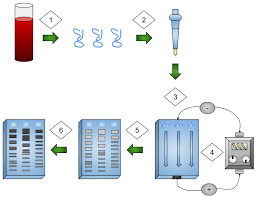
The Loading Dye of Gel Electrophoresis
The loading dye adds mass to the DNA sample so that it will go into the well and make it sink to the bottom of the well. The loading dye also adds blue color so that you can see what you are pipetting.
DNA is colorless. Once the DNA has been run through the gel, how can we see where it is on the gel?
Solution: Add Ethidium Bromide (EtBr) or Gel Red to the gel.

What does Ethidium Bromide do in Gel Electrophoresis?
The DNA intercalates with the Ethidium Bromide (EtBr). Intercalates = means to insert itself between the bases. GelRed also stains the nucleic acids.
So, both EtBr and GelRed will fluoresce under the UV light.
GelRed is safe because it has been engineered so that it cannot cross the cell membrane.
Gel Electrophoresis: Relative Size vs Absolute Size
Looking at a gel, you can determine which fragments of DNA are bigger than others = Relative Size.
Which fragments is bigger here, A or B?

Fragment A is bigger because it didn’t travel as far in a fixed amount of time.
Absolute Size in Gel Electrophoresis
How can we determine the actual size of the DNA fragments (how many base pairs – bp)?
Use a size standard Also called a DNA ladder, which consists of a series of fragments oknown sizes. Use it to compare to your DNA fragments
Click and check out these popular articles for more information: 🙂
Ectoderm vs Endoderm vs Mesoderm
Circulatory System: Blood Flow Pathway Through the Heart
Circulatory System: Heart Structures and Functions
Ductus Arteriosus Vs Ductus Venosus Vs Foramen Ovale: Fetal Heart Circulation
Cardiac Arrhythmias: Definition, Types, Symptoms, and Prevention
Upper Vs Lower Respiratory System: Upper vs Lower Respiratory Tract Infections
Seven General Functions of the Respiratory System
Digestive System Anatomy: Diagram, Organs, Structures, and Functions
Kidney Embryology & Development: Easy Lesson
Psychology 101: Crowd Psychology and The Theory of Gustave Le Bon
Introduction to Evolution: Charles Darwin and Alfred Russel Wallace
Copyright © 2022 Moosmosis Organization: All Rights Reserved
All rights reserved. This essay or any portion thereof may not be reproduced or used in any manner whatsoever
without the express written permission of the publisher.








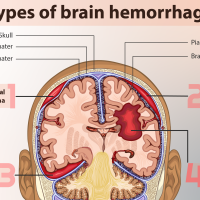
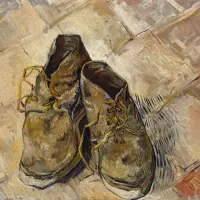

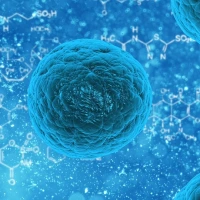



Wonderful article on gel electrophoresis!
LikeLiked by 2 people
Thank you Athena! 🙂
LikeLike
Excellent biology essay!
LikeLiked by 1 person
Thank you Seven! Appreciate your kind thoughts 🙂
LikeLike
Lovely article! I do gel electrophoresis often for my research, sharing this with my lab colleagues!
LikeLiked by 1 person
How cool! Incredible research you guys do. Thank you for sharing, Susie! 🙂
LikeLike
Amazing and superb articles!
LikeLiked by 2 people
Thanks for this succint lesson! I learned this in class today, and this made me understand gel electrophoresis better now.
LikeLiked by 1 person
Excellent article!
LikeLiked by 2 people